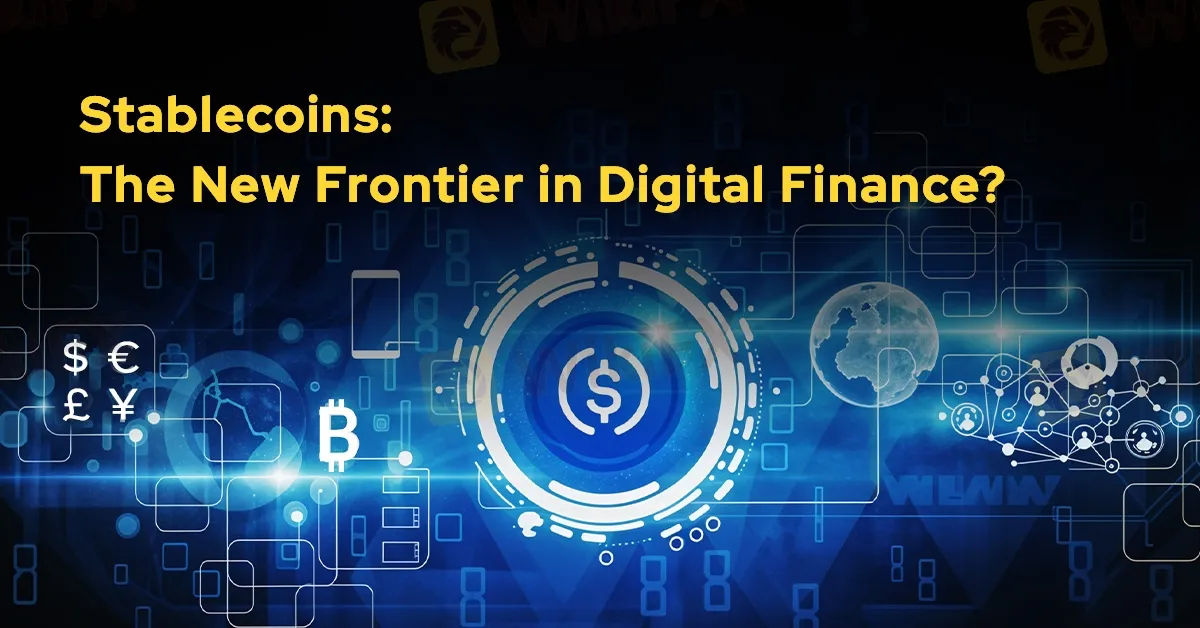Stablecoins: The New Frontier in Digital Finance?
Abstract:In 2024, while Bitcoin’s surge past US$100,000 captured global attention, financial institutions turned their focus to stablecoins. Will stablecoins be the new frontier in digital finance for the year of 2025?

In 2024, while Bitcoins surge past US$100,000 captured global attention, financial institutions turned their focus to stablecoins — cryptocurrencies designed to maintain a consistent value. Unlike the volatile nature of Bitcoin, stablecoins are typically pegged to traditional currencies, such as the US dollar, and have become a vital part of the digital asset landscape.
Major players in the financial industry, including Visa, PayPal, and Stripe, have been investing in stablecoin projects. The appeal lies not only in their stability but also in the opportunity for issuers to invest backing reserves in short-term US Treasuries, yielding significant returns. Additionally, stablecoins are increasingly being used for everyday transactions, bypassing the volatility of other digital currencies.
Industry observers note that demand for stablecoins has risen sharply among global corporations. Digital asset venture firms have highlighted their growing use in underserved sectors such as global contractor payments, trade finance, and remittances. Stablecoins enable users to receive US dollars quickly and efficiently, avoiding the delays, high costs, and failure rates often associated with traditional banking systems.

The stablecoin market has grown to a valuation of approximately US$205 billion, with Tether‘s USDT leading the sector. However, its dominance is being challenged as regulatory frameworks evolve. The European Union’s Markets in Cryptoassets (MiCA) regulations now require stablecoins on centralised exchanges to be issued by entities holding e-money licences. Tether has yet to meet this criterion, prompting several EU-based exchanges to delist its token. In contrast, Circle, Tethers main competitor, secured the necessary licence in July, positioning itself strongly in the European market.
In the United States, leading companies are launching initiatives to capitalise on the stablecoin boom. Visa unveiled the Visa Tokenized Asset Platform to support banks in issuing stablecoins, while payments firm Stripe acquired a fintech platform specialising in stablecoin transactions. PayPal has already introduced PYUSD, its own stablecoin, developed in collaboration with Paxos. The trend demonstrates a growing recognition of stablecoins as an attractive revenue stream for businesses looking to diversify their services.
Despite their benefits, stablecoins come with risks. The collapse of TerraUSD in 2022, an algorithmic stablecoin, serves as a stark reminder of the potential vulnerabilities in the sector. Terras failure triggered a market-wide sell-off, erasing US$200 billion in cryptocurrency value and leading to the downfall of several digital asset companies.
Regulatory clarity remains a challenge in the United States, where federal frameworks for stablecoins have yet to be established. However, the European Unions MiCA rules offer clear guidance, spurring adoption among Europe-based companies. Experts suggest stablecoins provide a viable alternative to traditional fintech models, which often face stricter banking regulations.

Read more

Bitcoin’s Market Drop: A Warning or an Investment Opportunity?
Bitcoin has taken a sharp fall, dropping to its lowest level since June 2022. Now hovering just above $84,000, this decline has made investors uneasy and raised concerns about the future of the crypto market. However, while some see this as a setback, others believe it could be an opportunity to invest. Which side are you on?

Pi Network: A Revolutionary Investment or a Speculative Gamble?
As the digital currency landscape continues to evolve, the Pi Network has emerged as a novel concept, promising to democratise cryptocurrency mining. Is Pi Network a revolutionary investment or a speculative gamble?

Have You Heard of MOA and BANNED? Beware These Crypto Token Scams
Discover the MOA and BANNED token scams on the Ronin blockchain. Learn how to spot and avoid them with simple, practical tips. Stay safe!

Massive Crypto Scam in Philippines: Education Pioneer Wealth Society Exposed
Unmasking the $300M crypto scam by Education Pioneer Wealth Society in the Philippines. Learn about this pig butchering fraud and how to fight back.
WikiFX Broker
Latest News
Lawmakers Push New Crypto ATM Rules to Fight Fraud
2025 WikiFX Forex Rights Protection Day Preview
PH Senator Probes Love Scams Tied to POGOs
Mastering Calm: How to Stay Cool in Forex Trading?
The End of Costly USDT Transfers: Tron Reshapes Stablecoin Transactions
BP\s shareholders want it to make money, not climate policy
2025 SkyLine Guide Thailand Opening Ceremony: Jointly Witnessing New Skyline in a New Chapter
TriumphFX: The Persistent Forex Scam Draining Millions from Malaysians
Safety Alert: FCA Discloses These 11 Unlicensed Financial Websites
Why does Botbro change the domain name?
Rate Calc

